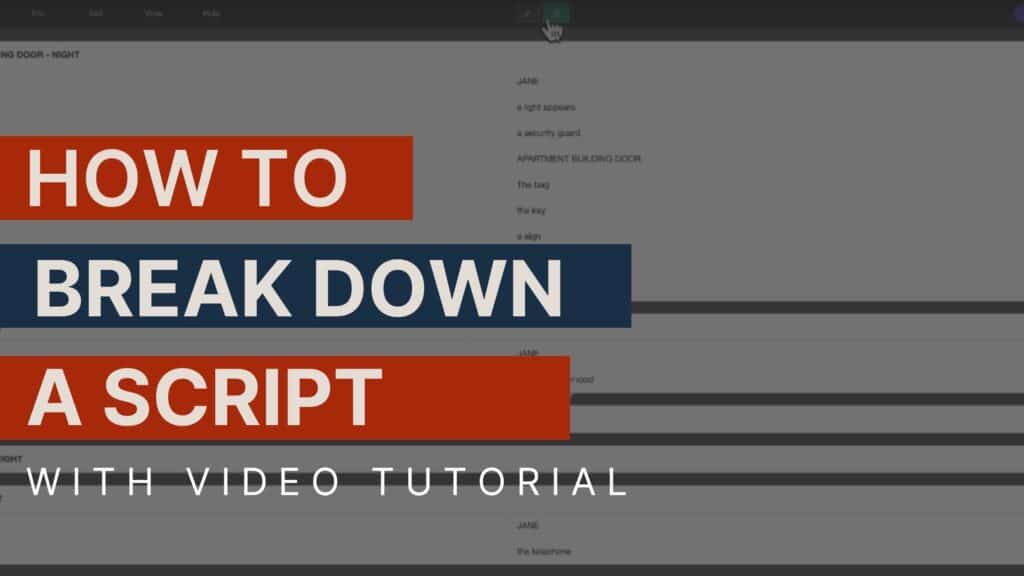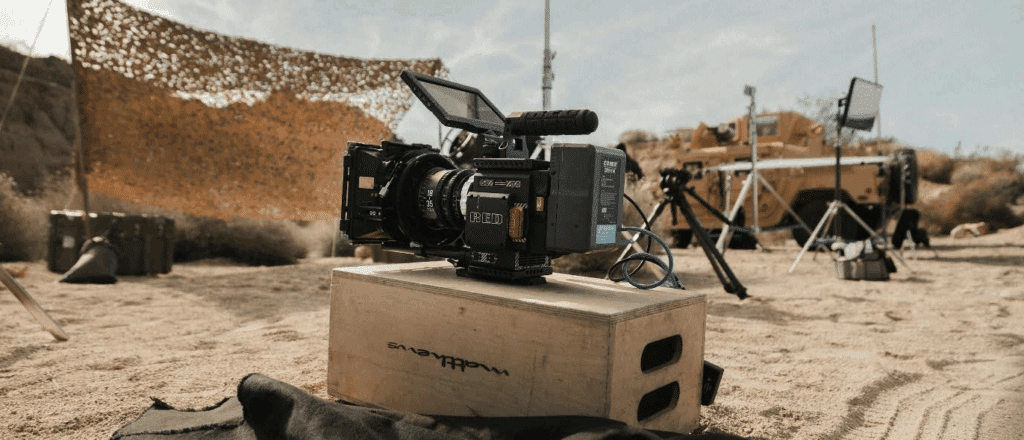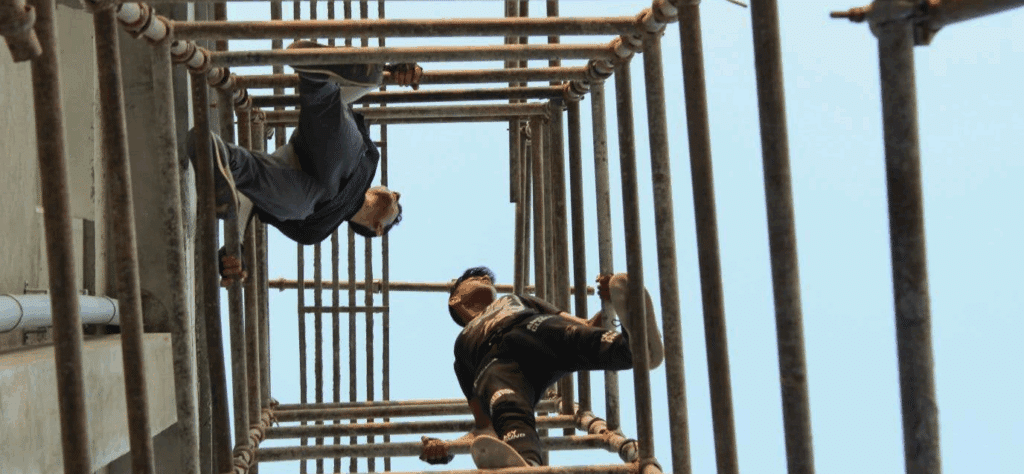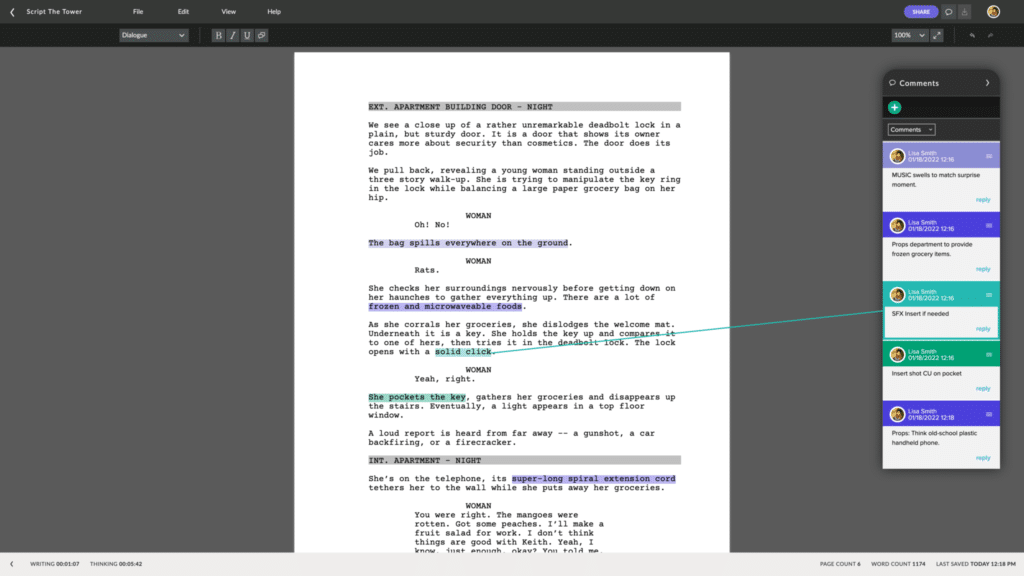
Are you a seasoned filmmaker or one who’s just getting started with your first short film? No matter which stage of your filmmaking journey, you need a script breakdown, one of the most essential pre-production steps!
The script breakdown is the secret sauce that helps your vision become a reality. It transforms raw script pages into a fully budgeted, scheduled, and shootable project.
So, if you’ve never heard of script breakdowns before or you need further insights into them, you’ve come to the right place. In today’s blog, we’ll explore the script breakdown as well as give you a step-by-step guide on how to break down your scripts, the elements to focus on, and how to stay organized.
We’ll even throw in a free template and our top tips for indie creators.
So, let’s get going…

Table of Contents
- What is a Script Breakdown?
- Why Script Breakdowns Matter for Production
- Key Elements of a Script Breakdown
- Script Breakdown Sheets
- Tools to Automate Script Breakdowns
- Tips for Indie Creators
- FAQ
- Conclusion
What is a Script Breakdown?
A script breakdown is the process of analyzing your screenplay to identify all the production elements needed for each scene.
These elements include characters, props, wardrobe, visual effects, stunts, locations, sound effects, and more. Essentially, it’s there to turn creative content into logistical data for the crew.
Script breakdowns are compiled by going through the script line by line, highlighting every item that needs to be accounted for in the production. Each highlighted element is then catalogued into what’s called a script breakdown sheet, which is the foundation of your budget, shooting schedule, and production plan.
Why are script breakdowns important? Well, a great script is only as good as your ability to execute it. Without a detailed background, you risk underestimating the resources you’ll need, overlooking crucial props, or mismanaging time.
A good script breakdown ensures there’s:
- A clear understanding of production needs
- Accurate scheduling and budgeting
- Better communication with department heads
- Fewer surprises during filming
Try the Celtx Script Breakdown tool today – start for free!
Why Script Breakdowns Matter for Production
Film production is like building a house. You wouldn’t start without blueprints, a materials list, and a project timeline. Think of a script breakdown as that blueprint for filmmakers.
So, why is a script breakdown a non-negotiable? Let’s explore this further:
Budget Planning
Every line in a script potentially adds a line to your budget. A dog, car chase, crowd scenes: they all cost money. Your script breakdown identifies all these expenses early on so they can be planned for.
Efficient Scheduling
When you know what every scene needs, you can schedule more efficiently. For example, if three scenes require the same location or costume, it’s a smart idea to shoot them on the same day.

Team Coordination
Every department, from costumes and props to camera and sound, relies upon the breakdown to prep their work. A detailed breakdown minimizes on-set confusion and maximizes productivity.
Risk Management
Identifying stunts, weather-sensitive shots, or complex logistics in advance can help avoid costly delays or reshoots.
Key Elements of a Script Breakdown
When breaking down a script, you’re cataloguing everything the scene demands. The industry standard is to use color-coded highlights for different production categories.
Here are the main ones to look out for and highlight as you comb through your screenplay:
1. Cast
Every time a character appears in a scene, mark it. This helps with scheduling actors and managing talent contracts.
2. Props
Any item a character physically interacts with (e.g. phones, guns, letters) is a prop. Passive items in the background will usually fall under set dressing.

3. Wardrobe
Costumes help establish setting, time period, and character. Changes in wardrobe should be flagged to track continuity and wardrobe prep.
4. Makeup and Hair
Special looks such as aging, injuries, and fantasy elements or changes in hair and makeup need to be identified so the relevant items are ready for the shoot.
5. Visual Effects (VFX)
These are effects that are added in post-production like explosions, green screen background and CGI characters.
6. Sound Effects (SFX) and Music
If a script calls for specific sounds such as gunshots, sirens, and ambient city noise, make sure to highlight these for post-production planning.
7. Stunts
Any action that needs specialized safety equipment, considerations or stunt performers must be clearly noted on the script breakdown.

8. Locations
Every unique setting must be logged for location scouting, permits, and scheduling.
9. Vehicles and Animals
Cars, motorcycles, dogs, and horses all require special planning, insurance, and possibly additional permits.
10. Special Equipment
Need a drone? A crane shot? A Steadicam? Highlight these so your Director of Photography (DP) and production manager can plan accordingly.
Script Breakdown Sheets
Once you’ve highlighted your script, the next step is to transfer the data into a script breakdown sheet. This document captures all the necessary elements for each scene in a structured format.
The elements include:
- Scene numbers
- Interior/exterior
- Day/night
- Scene descriptions
- Characters present
- Props required
- Wardrobe notes
- Special requirements (VFX, stunts, animals, etc.)
Script breakdown sheets are often compiled into a production binder and shared with department heads. You can use traditional paper forms or digital tools like Celtx.
Ready to break down your script?
Sign up for Celtx!
Tools to Automate Script Breakdowns
Talking of digital tools, doing breakdowns manually can of course be time consuming, especially for longer scripts. Luckily, there are great software tools that automate parts of the process and integrate with scheduling and budgeting tools.

Celtx
Did you know that Celtx can help you with your script breakdowns? We’re a cloud-based pre-production suite that allows you to:
- Highlight elements directly in your script
- Auto-generate breakdown sheets
- Share with collaborators
- Synchronise with calendars and shot lists
Check out how script breakdowns work in Celtx in our video tutorial below:
Other tools include:
- StudioBinder: More client-facing, ideal for indie agencies and short films
- Final Draft Tagger: Works with Final Draft scripts and lets you tag elements for breakdowns
- Gorilla Scheduling: A powerhouse tool for scheduling, budgeting, and production reports
All these tools save time and reduce errors, especially when you’re juggling multiple responsibilities.
Tips for Indie Creators
You may be an indie filmmaker and be very familiar with wearing many hats. Here are our top tips to streamline your script breakdown process on a tight budget:
1. Start with the Final Script
It’s important that you only break down a locked shooting script that’s been finalized and had its final revision. Consistent changes waste time and throw off planning.
2. Use Free Tools First
If you can’t afford specialized software to create your script breakdown, start with free tools. Google Sheets and the humble highlighter are great ways to get started.
3. Prioritize Key Elements
If you’re short on time, first focus on what affects the budget most, such as locations, stunts, VFX, and characters.
4. Color-Code Consistency
Create a color key for each category and stick to it. This ensures anyone in the crew reviewing the breakdown can follow along easily.

5. Batch Similar Scenes
During breakdown, group scenes by location or time of day to simplify the scheduling later on.
6. Collaborate
You don’t need to create the breakdown alone. Bring in your heads of department (HODs) into the process early. You may find that their insights can catch things you missed.
7. Think Like a Line Producer
Filmmaking is a business after all, and every line in the script costs money. A breakdown helps you think practically while staying creative.
And for more production tips, check out the Film Independent site.
FAQ
How long does a script breakdown take?
The length of a script breakdown completely depends on the script length and complexity. For a 90-page feature, expect 1-2 full days. Of course, automated tools can cut this time down.
Should I break down every scene?
Yes, even the simplest of scenes. Something as basic as INT. KITCHEN – DAY still involves location, lighting, props etc.

Who usually creates the breakdown?
The 1st Assistant Director (1st AD) or Line Producer will typically handle breakdowns, but directors and writers can start the process too, especially if it’s an indie project.
Can AI make my script breakdown?
AI tools can of course assist, but human review is essential for accuracy. Subtleties in tone, performance, and story impact what’s ultimately needed in a scene.
Conclusion
Breaking down a script might not be the most glamorous part of filmmaking, but it’s absolutely essential. It’s where creative meets logistical, where dreams get priced out, scheduled, and turned into reality.
By carefully analyzing each scene and cataloging every element, you’re setting your production up for success. Whether you’re working with a skeleton crew or a full team, the principles are the same. A clear, thorough breakdown will save time, money, and stress. and it’ll show in the final product.
Ready to get started?
- Watch our step-by-step video tutorial
- Try Celtx to test digital breakdowns
- Check out our Celtx Blog for more tutorials, templates, and filmmaker tools
Have questions about your own script? Drop them in the comments or reach out; we’re here to help your story come to life.
A well-done breakdown is the blueprint for your entire production.
With Celtx, you can tag, schedule, and manage every scene with clarity and control.
🎬 Start breaking down your script in Celtx
Up Next:

How to Create a Shooting Schedule
Once your script is broken down, it’s time to turn that data into a real-world plan. Learn how to build a shooting schedule that makes the most of your time, talent, and budget.
